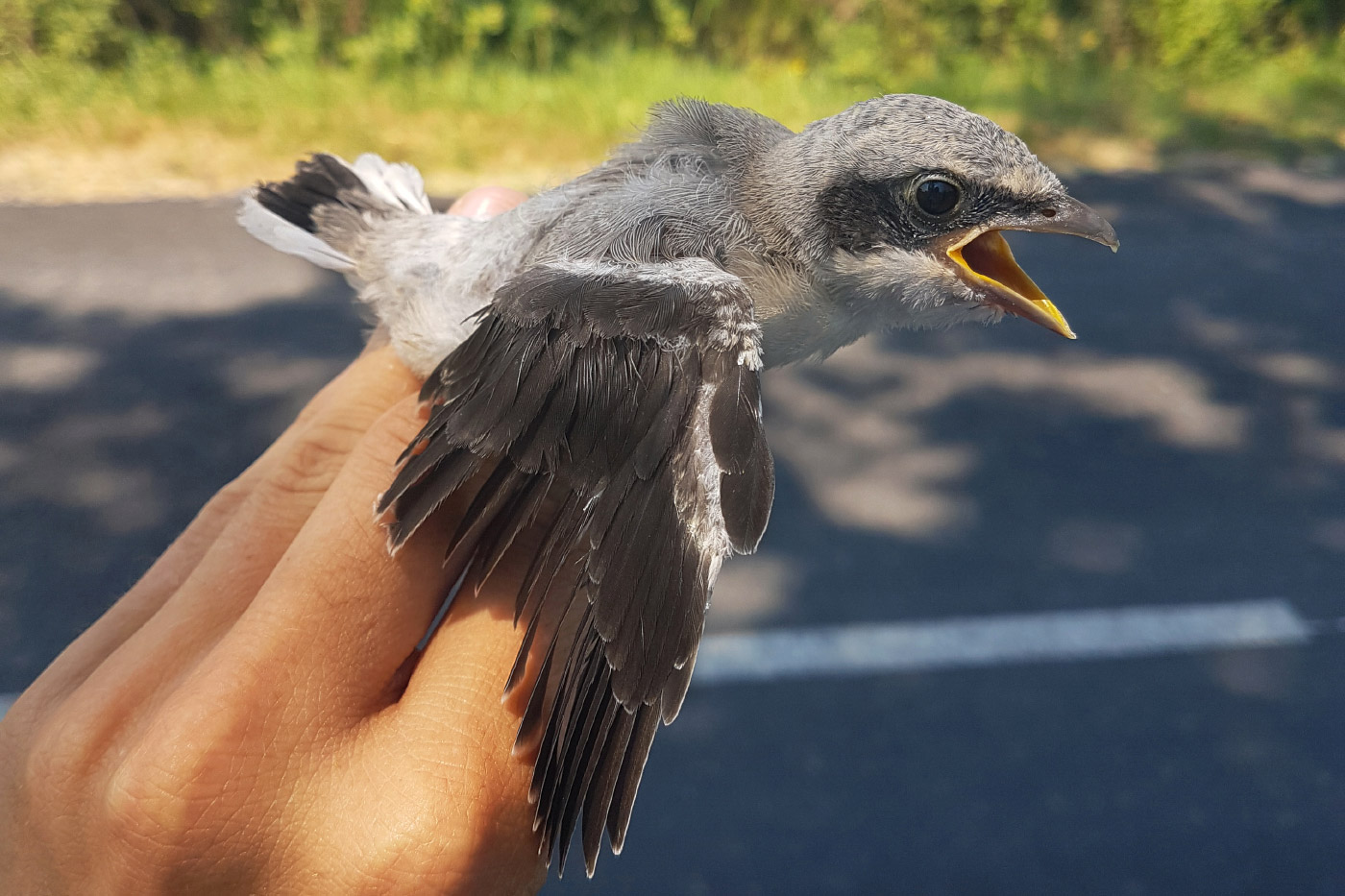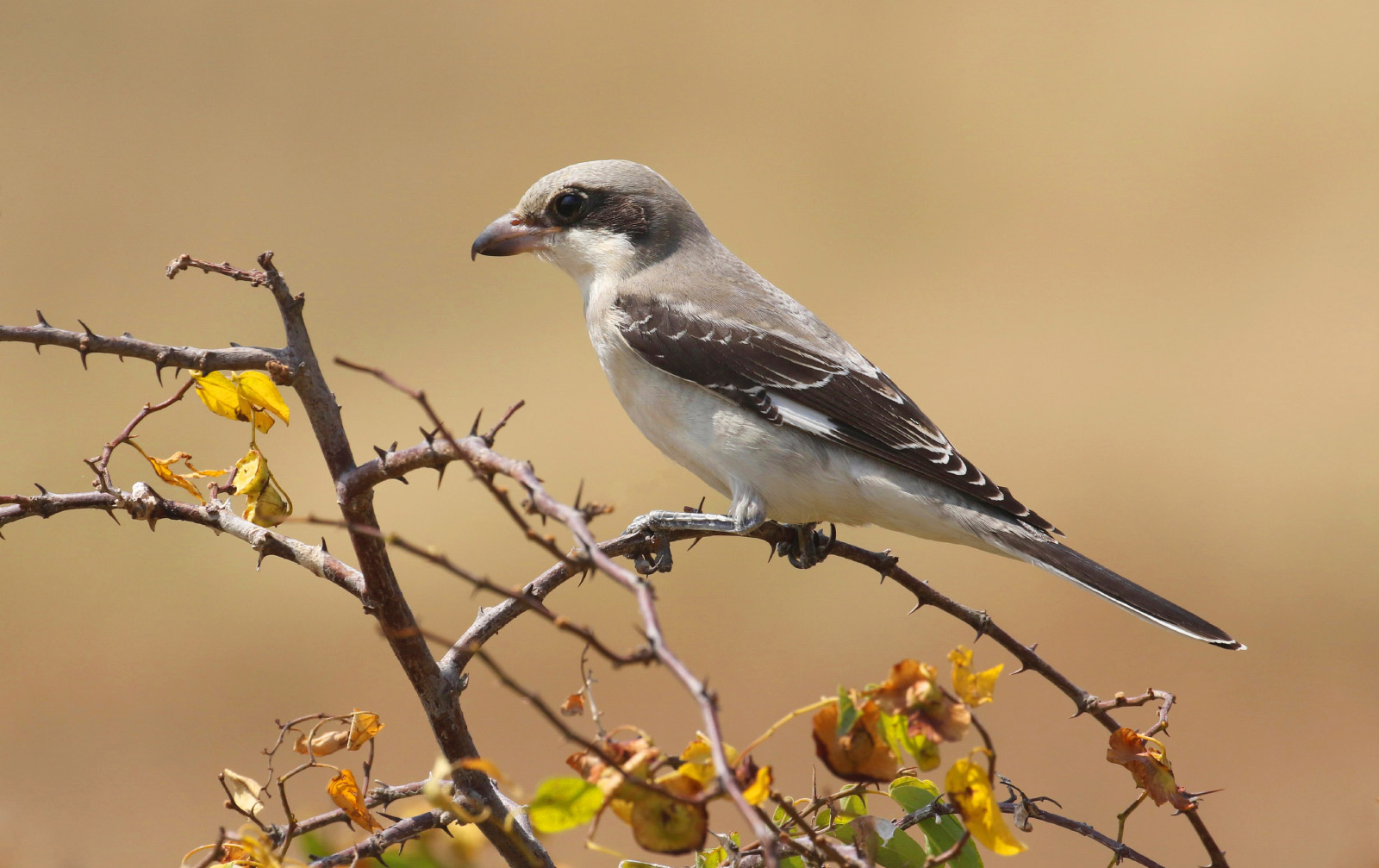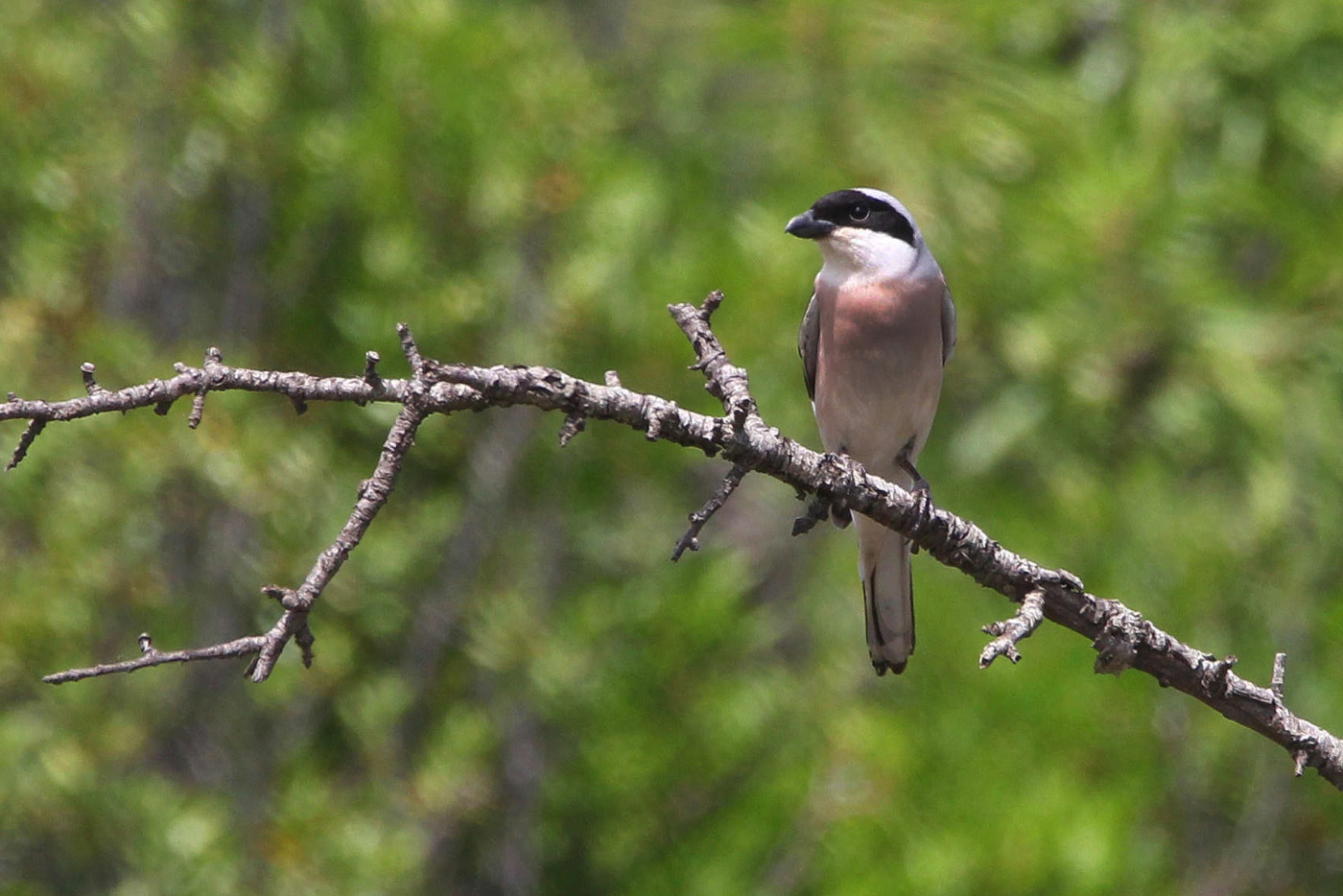Lesser Grey Shrike has failed to breed successfully in France this year for the first time in recorded history, making it the first bird species to be lost as a breeder in the country in the 21st century. Only one pair settled in mid-May in the department of Hérault, but at the beginning of July the female disappeared and the male alone could not feed the chicks. He left the site two days later.

This juvenile Lesser Grey Shrike, one of the last to be born in France, fell from its roadside nest in Hérault on 3 July 2018 but was quickly returned (Thomas Dagonet).
Historically, the species was considered as common across the majority of France before World War I, except in the extreme south-west, in Brittany and along the Channel coast. It was an occasional breeder in the very north of the country, with a few documented breeding cases. Around the Mediterranean coast and in the east of the country, it was very common and sometimes considered the most abundant shrike.
After the World War II and following the evolution of agricultural practices, the population suffered a brutal decline – firstly at the margins of its range, but subsequently all over, with its distribution progressively shifting to the south. By the early 1990s, Lesser Grey Shrike bred only in the Languedoc-Roussillon region (bordering the Mediterranean Sea). By 1999, the species was present only in the departments of Aude (in the fertile plains) and Hérault (plains to the the south-west of Montpellier), where 56 pairs were counted.
The total breeding population remained between 40 and 50 pairs until 2001, before a reduction to between 27 and 36 pairs from 2002-2007. A subsequent fall saw the population drop to only 17-20 couples over the following years until 2014, when a welcome surprise saw a rise to 28 pairs (these producing between 80 and 84 fledged youngsters). However, this improvement was short-lived – the species, which is listed as Critically Endangered on the national red list of breeding birds in France, once again declined to just 10 pairs in 2015, eight in 2016, five in 2017, two in 2018 and one in 2019.
Isolated and episodic nesting is sometimes noted in the departments of Var (2014 and 2015) and in the plain of Crau (2018). Furthermore, a mixed pair of Woodchat Shrike (female) × Lesser Grey Shrike (male) attempted to nest in the Vosges department in 2016.

One of the final adults to successfully produce young in France, photographed on 21 May 2018 (Thomas Dagonet).
Feeding on invertebrates, this shrike occupies agricultural mosaics with vines and more open areas. The species is very site loyal, returning to the same nesting areas year after year. It builds its nest at heights of 10-20 metres, often in large alignments of roadside plane trees (as in Hérault) or large ash trees (Aude). It is a sociable species and, when the food resources are available, sometimes two nests can be found within 100-150 metres of each other.
The dramatic decline of the species is most likely in part due to climatic fluctuations noted over the last 150 years, which have caused climate 'Atlanticization' across France, with more wetter conditions in the summer months. The bastions of this continental climate-related species that remained in eastern France (Alsace, Champagne-Ardenne and Lorraine) until the early 1970s frequented cultivated areas (large trees and mosaics of various crops) have to be eliminated too, no doubt under the inexorable advance of intensive agriculture, including the establishment of huge monocultures and the massive use of pesticides.
The drastic decline in French numbers, which have been closely monitored for more than 25 years, goes beyond France's borders and is linked to a combination of factors, in addition to current agricultural practices, certain climatic factors and poaching on its long Mediterranean migration routes (6,200 miles) and the degradation of wintering habitats. This last factor is likely to cause strong inter-annual variations of the French breeding population in the 2000s without any changes being noted locally. Lesser Grey Shrike spends only 25 per cent of its annual cycle on its nesting sites. In autumn migration, the European populations converge on the Balkan peninsula, the Greek islands, then penetrate southwards into Africa and, more precisely, approach the Egyptian coast, where several hundreds of miles of mistnets wait to catch them (and other passerines).

A young Lesser Grey Shrike photographed in the unspoilt landscapes of Armenia, where the species remains common for now (Hugo Touzé).
Likely even more serious for Lesser Grey Shrike are climatic trends on its African wintering grounds. A much smaller area than its total Palearctic breeding range, this extends mainly to semi-arid areas receiving around 600 mm rain per year and includes the extreme south of Angola, Namibia, Botswana, parts of Mozambique and the north-eastern limits of South Africa. Periods of drought have always existed periodically in these areas, but they are now occurring at an unprecedented frequency and magnitude.
These difficult conditions in Africa presumably affect more or less the entire world population of Lesser Grey Shrike, and it seems logical to think that the negative effects of this winter phenomenon mainly have an impact on the numbers of breeding populations located at the edges of the species' breeding range – such as those of the south of France. The National Museum of Natural History in Paris modelled the future world winter distribution of the species and the results obtained were not reassuring, predicting a gradual fragmentation of its wintering area, with barely a quarter of its current extent remaining in 2100, confined to the extreme south-east of the African continent.
In France, the implementation of a Regional Action Plan in 2008 and then a National Action Plan in 2013 unfortunately could not curb the decline of the species, but it did ensure the conservation of suitable habitats for spontaneous or assisted recolonization. Strong international co-operation on the conservation of the species is now needed to stop the very real slide towards its extirpation throughout Western Europe.

Is the loss of Lesser Grey Shrike as a breeding bird in France just the beginning of a disastrous period for the species, and could it even face extinction towards the end of the 21st century? Time will tell (Thomas Dagonet).
References
Barbet-Massin, M, Walthier, B A, Thuiller, W, Rahbeck, C, & Jiguet, F. 2009. Potential impacts of climate change on the winter distribution of Afro-Palaearctic migrant passerines. Biology Letters 5: 248-251.
Dowsett, R J. 1971. The Lesser Grey Shrike in Africa. Ostrich 42: 259-270.
Isenmann, P, Debout, G, & Lepley, M. 2000. La Pie-grièche à poitrine rose Lanius minor nicheuse à Montpellier (sud France). Alauda 68: 123-131
Issa, N, & Muller, Y. 2015. Atlas des oiseaux de France métropolitaine. Nidification et présence hivernale. LPO/SEOF/MNHN, Delachaux et Niestlé, Paris.
Lefranc, N. 1970. La Pie-grièche à poitrine rose Lanius minor dans le Nord-Est de la France. Fluctuations, statut actuel, notes sur la reproduction. L'Oiseau & RFO 40: 89-103.
Lefranc, N. 1978. La Pie-grièche à poitrine rose Lanius minor en France. Alauda 46: 193-208.
Lefranc, N. 1995. Decline and current status of the Lesser Grey Shrike Lanius minor in Western Europe. In Yosef, R, & Lohrer, F E (eds). Shrikes (Laniidae) of the World: biology and conservation. Proc West Found Vert Zool 6 : 93-97.
Lefranc, N, Brunet, C, & Schreiber, A. 2017. Un couple mixte Pie-grièche à poitrine rose x Pie-grièche à tête rousse dans les Vosges. Ornithos 24-2: 108-117.
Lefranc, N, & Issa, N. 2013. Plan National d'Actions « Pies-grièches », Lanius sp 2014-2018. MEDDE/LPO.
Rufray, X, & Rousseau, E. 2004. Oiseau de France. La Pie-grièche à poitrine rose Lanius minor: une fin annoncée. Ornithos 11-1 : 36-38.


